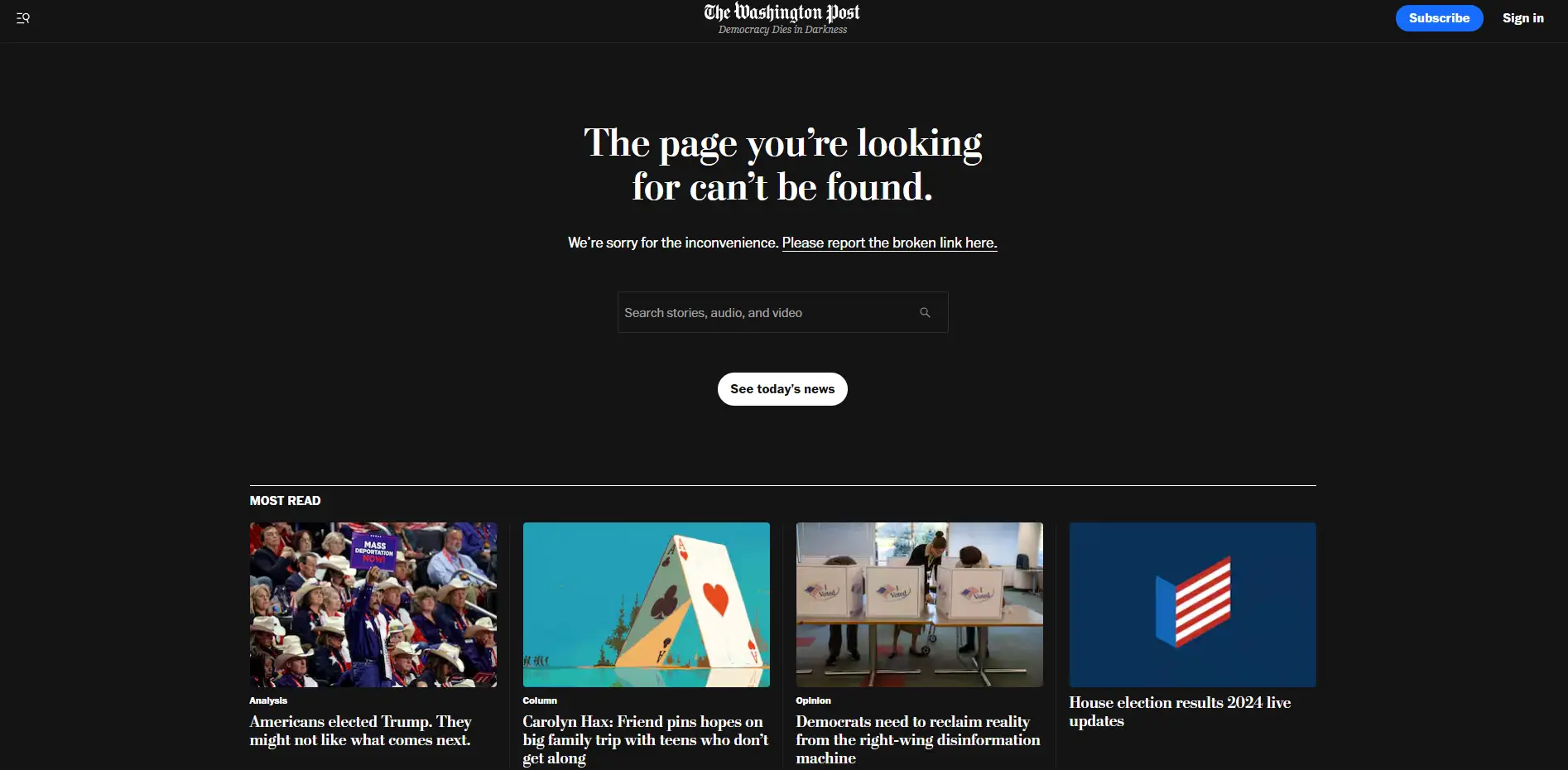Removing URLs from Google Search is a key part of SEO management. When done strategically, it improves a website’s health and visibility by removing redundant or irrelevant content.
In this article, I’ll explain why removing unwanted URLs is not just necessary but essential. Though it may seem intimidating, proper URL pruning strengthens your site. We’ll cover why it’s sometimes a tough decision, strategies to make it easier, and the penalties you might face if done incorrectly.
Importance of Effective URL Removal
Effective URL removal acts as a detox for your website. It prevents search engines from wasting resources on irrelevant or low-quality pages that harm your site’s credibility. Think of it as digital decluttering—removing junk so valuable content can shine. This process maintains site health, improves user experience, and boosts organic rankings.
When Does URL Removal Become Essential?
Certain situations make URL removal a necessity. Identifying these moments is crucial for maintaining a thriving website. Let’s explore key scenarios where URL removal becomes critical.
Spam or Duplicate URLs Impacting SEO Performance
Spam or duplicate URLs act like weeds choking a garden. They often stem from poor site architecture or outdated strategies, creating indexing issues and reducing credibility. Search engines dislike redundancy, and users do too. Removing these URLs clears the way for important content to stand out.
Outdated or Incorrect Information on Pages
Outdated or incorrect information can erode trust. Imagine landing on a page with irrelevant or misleading details—it immediately damages credibility. A strong brand values integrity, and letting outdated pages remain risks harming its reputation. Removing or updating these pages ensures your site delivers value to visitors.
SEO Case Study #1: The Challenge of Removing 120,000 URLs
This case study examines a large news website’s struggle with cleaning up 120,000 low-quality URLs. The goal was to enhance SEO performance and regain a competitive edge.
Background of the Website
The client was a high-traffic news site operating on an outdated platform, grappling with ineffective SEO management largely due to an overwhelming number of low-value URLs. This burden negatively impacted the site’s ranking potential and overall visibility.
Challenges Posed by Low-Quality Content
Over time, the website amassed tens of thousands of junk URLs. These URLs provided little to no value, resulting in a detrimental effect on SEO performance and user experience. The excess of low-quality content made it difficult for search engines to effectively crawl and index the site, ultimately harming its credibility.
Junk Articles and Poor SEO Structure
The site’s SEO structure was fundamentally weak, primarily because of poor content generation practices. This led to numerous redundant “similar to” articles that failed to offer meaningful value. These articles cluttered the site and diluted the quality of content, making it less appealing to both users and search engines.
Identifying the Root Cause: Algorithmic Issues
The root cause of the problem lay within an ineffective content-generation algorithm. This algorithm consistently produced duplicate or low-quality, spam-like content, which exacerbated the issues of redundancy and poor site quality. Without addressing this fundamental flaw, true optimization was not possible.
Categories of URLs Needing Removal
A thorough audit of the site revealed several categories of URLs that required removal. These included outdated news articles that no longer served a purpose, spammy duplicates that provided no additional value, and irrelevant content that detracted from the website’s focus. By identifying and removing these problematic URLs, the site could refocus on providing relevant, high-quality content, thereby improving its SEO performance and user experience.
The SEO Strategy to Solve URL Bloat
Redesigning the 404 Page for SEO Optimization
To tackle the issue of URL bloat, I focused on redesigning the 404 page, transforming it from a liability into an asset by adhering to best SEO practices.
Best Practices for SEO-Optimised 404 Pages
An effective 404 page should guide users towards related content rather than pushing them to leave the site. To achieve this, I integrated content suggestions to maintain user engagement and reduce bounce rates.
Avoiding SEO Mistakes in Redirects
A frequent SEO mistake is redirecting all 404 pages to the homepage, which can lead to user frustration and diminished trust. Instead, I implemented relevant redirects to ensure users were directed to pages that closely matched their initial intent, thereby enhancing the overall user experience.
High-Quality Redirects to Preserve Content Value
High-value content that continued to attract significant traffic was identified, and targeted redirects were put in place to guide users towards compilation articles. This approach helped in preserving the SEO value of these pages.
Identifying Valuable Pages for Redirects
A comprehensive analysis was conducted to identify pages that still generated meaningful traffic. These pages were carefully preserved through strategic redirects, ensuring that valuable content remained accessible and beneficial for SEO performance.
Strategy for Compilation Articles
Compilation articles were created to consolidate relevant information, turning them into a valuable resource for users. This not only improved the quality of content available but also helped retain the overall value of the site by reducing redundancy and enhancing user satisfaction.
Implementing Changes on the Sonata Platform
Implementing the necessary changes on the Sonata platform proved challenging due to the site’s outdated technology stack, which added considerable complexity to the process. Sonata, a largely obsolete platform, presented significant obstacles when attempting to execute large-scale updates efficiently. Close collaboration with developers was essential to navigate these challenges, ensuring that changes were implemented smoothly without causing disruptions or compatibility issues. Additionally, the content-generation algorithm was thoroughly optimised, shifting focus from producing junk URLs to creating high-quality, user-centric content, thereby improving overall site performance and credibility.
The Outcome: Was There an SEO Penalty?
The outcome of the cleanup was a testament to the importance of careful planning in SEO management. Despite the large-scale content removal, strategic redirects played a crucial role in avoiding significant drops in search rankings. Key metrics, including bounce rate, average time on site, and organic impressions, were closely monitored to assess the impact and ensure that the site’s performance remained stable. Maintaining user experience was of paramount importance throughout this process, ensuring that users could still access valuable content, which ultimately helped in avoiding penalties and preserving overall engagement levels.
Client’s Approach and Challenges
The client’s approach to SEO was marked by initial resistance to proactive measures, largely influenced by budget constraints and a cautious attitude towards risk. The client preferred a conservative strategy, avoiding aggressive SEO tactics that were recommended for quicker results. Budget limitations further restricted the ability to fully implement tools like Google Console, which could have significantly enhanced the optimization process. The client’s limited risk appetite led to safer, albeit slower, SEO decisions. Despite the delayed timeline, this cautious strategy eventually produced positive outcomes, demonstrating that patience and a measured approach can still yield success, albeit at a slower pace.
Key Takeaways from the SEO Case Study
Prioritising User Experience Over Link Quantity
The case study demonstrated that emphasising user experience, rather than merely increasing the number of URLs, was a more effective strategy for improving SEO performance. By removing clutter and enhancing user experience, significant improvements in key SEO metrics were observed.
SEO Results Over Time: Patience is Crucial
Major SEO changes, particularly those involving extensive URL removals, require patience. The full impact of such modifications often takes months to manifest, making it crucial to manage expectations.
Setting Realistic Expectations for Long-Term SEO Success
It is essential to communicate realistic timelines to clients, emphasising that SEO is a long-term investment. The results of these efforts are not immediate, but the benefits are substantial and worthwhile.
6-12 Month Timeline for Impactful SEO Changes
In this case study, the true effect of the implemented changes became clear over a 6-12 month period. This timeline aligns with the expected duration for seeing tangible results from large-scale SEO modifications, reinforcing the need for patience and strategic planning.
Mitigating Risks When Removing Large Amounts of Content
Removing a substantial amount of content can be fraught with risks, but with proper planning and strategic execution, these risks can be effectively mitigated. In this case, careful preparation and prioritisation ensured that valuable content was preserved, while unnecessary junk URLs were removed to enhance the site’s overall quality and performance.
Planning for Safe and Effective Content Removal
A meticulous planning process was crucial to ensuring that content removal was both safe and effective. This involved a detailed audit of existing URLs to identify which pages added value and which were redundant or detrimental to SEO performance. By carefully prioritising which content to retain and which to eliminate, the project maintained the site’s integrity and optimised its overall health.
Redirect Strategy to Avoid Penalties
Redirecting users from removed content to relevant, useful pages was an integral part of the strategy to prevent SEO penalties and enhance user retention. Instead of redirecting to unrelated or generic pages, targeted redirects ensured users found what they needed, which contributed to better user experience and reduced bounce rates.
Client Feedback and Long-Term Impact
The success of the cleanup led to further opportunities for collaboration. Encouraged by the positive outcomes, the client sought additional consultations for optimising future campaigns, particularly during peak traffic seasons. This long-term engagement also included seasonal analysis and traffic optimization strategies, demonstrating the value of building on a successful foundation.
Returning Clients and Building Trust Over Time
Effective and impactful SEO projects like this one often pave the way for enduring client relationships. The success in mitigating risks and improving site performance not only reinforced trust with the client but also proved the ongoing value of strategic SEO interventions. Such trust is essential for fostering long-term collaborations that continue to evolve and grow.
FAQs on Removing URLs from Google and Bing Search
How Can I Remove URLs Quickly from Google?
Quick URL removal can be done using Google Console’s removal tool, which lets you block pages temporarily while you fix or permanently delete them.
What Are the Consequences of Removing Half of My Site Content?
Removing a significant portion of your site content can improve SEO if the removed content was redundant, outdated, or spammy, provided it is replaced with valuable, user-focused content.
What Is the Difference Between Deleting and Redirecting URLs?
Deleting URLs removes them completely from the search engine index, whereas redirecting guides users to a more relevant page.
How Long Does It Take for Google to Remove a URL?
Google can take anywhere from a few days to several months to fully remove URLs, depending on the method used and the site’s crawl rate.
Should I Use Google Console for Bulk URL Removal?
Yes, Google Console is one of the most efficient tools for bulk URL removal if the content is no longer relevant.
How Does a Well-Designed 404 Page Help in SEO?
A well-designed 404 page can keep users on your site longer by directing them to useful content, thereby reducing bounce rates.
Conclusion
Reflecting on the Case Study’s Impact
The removal of 120,000 URLs was a strategic manoeuvre that significantly enhanced both the SEO health of the website and the user experience. This success underscores the necessity of targeted content removal, smart redirection, and careful planning in managing large-scale SEO projects. It also highlights the value of prioritising quality over quantity and the positive outcomes that stem from focusing on user experience.
Optimism for Future SEO Initiatives
The results of this initiative offer optimism for the future of SEO efforts that emphasise quality and usability. Continued investment in thoughtful SEO strategies will help maintain this positive trajectory, ultimately benefiting both the website and its users in the long run.
Ready to take your website’s SEO performance to the next level? Contact Spotlightwebs today to discuss how we can help elevate your online presence and drive meaningful results.





